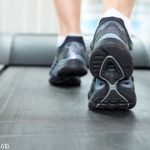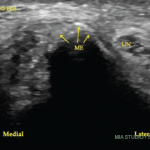
Beresnev / shutterstock.com
A patient’s gait, or how they walk, is an important predictor of the biomechanical load distribution that affects osteoarthritis (OA). This understanding comes from a growing body of literature in biomechanics to test and treat patients with OA, which takes into account a very practical treatment: a patient’s shoes.
A focus on flexible footwear, along with attention to healthy anatomical alignment, gait and load redistribution, can make a difference for patients with medial knee OA. This observation is based on several years of research, including a study analyzing flexible footwear and impact joint loads over several months, explains Najia Shakoor, MD, rheumatologist and professor in the Department of Internal Medicine at Rush University Medical Center, Chicago.1
Training Patients to Optimize Gait
Dr. Shakoor and her research colleagues believe patients with medial knee OA can be empowered to retrain how they walk to reduce pain and, possibly, slow their disease progression. “Sometimes, it comes down to a patient’s awareness and knowledge about the way they walk and the footwear they choose,” she says.
This perspective is based on ongoing research she and her colleagues have conducted that has shown patients with medial knee OA who wear flexible footwear for a sustained period of time change the way they walk, resulting in better knee load distribution. However, this research has also demonstrated that flexible footwear alone does not help every patient.2
As a result, Dr. Shakoor and her colleagues are now studying how flexible footwear and measuring the pressure distribution patterns of the feet during walking can be used together to help patients with OA walk differently. For this current investigation, participants with medial knee OA are asked to wear a flexible shoe outfitted with a pressure-detecting insole that reads the patient’s foot load distribution. The patient is trained to alter this foot pressure distribution to improve the knee load distribution while walking. The insole wirelessly communicates with a handheld device so that participants can train at home.
Discussing Flexible Footwear
In treating patients with a degenerative disease, such as OA, any practical advice a physician can give a patient is valuable, Dr. Shakoor says.
Although research into how footwear may reduce knee load distribution is not new, it continues to evolve, and Dr. Shakoor encourages all rheumatologists treating patients with knee OA to make sure they keep up with the research.
“Footwear isn’t always part of the discussion between a rheumatologist and a patient with knee OA during a clinic visit, but it should be. It may make a difference,” she says. “Taking action to help their disease in any way is important to patients. That’s why it needs to be important to us.”


